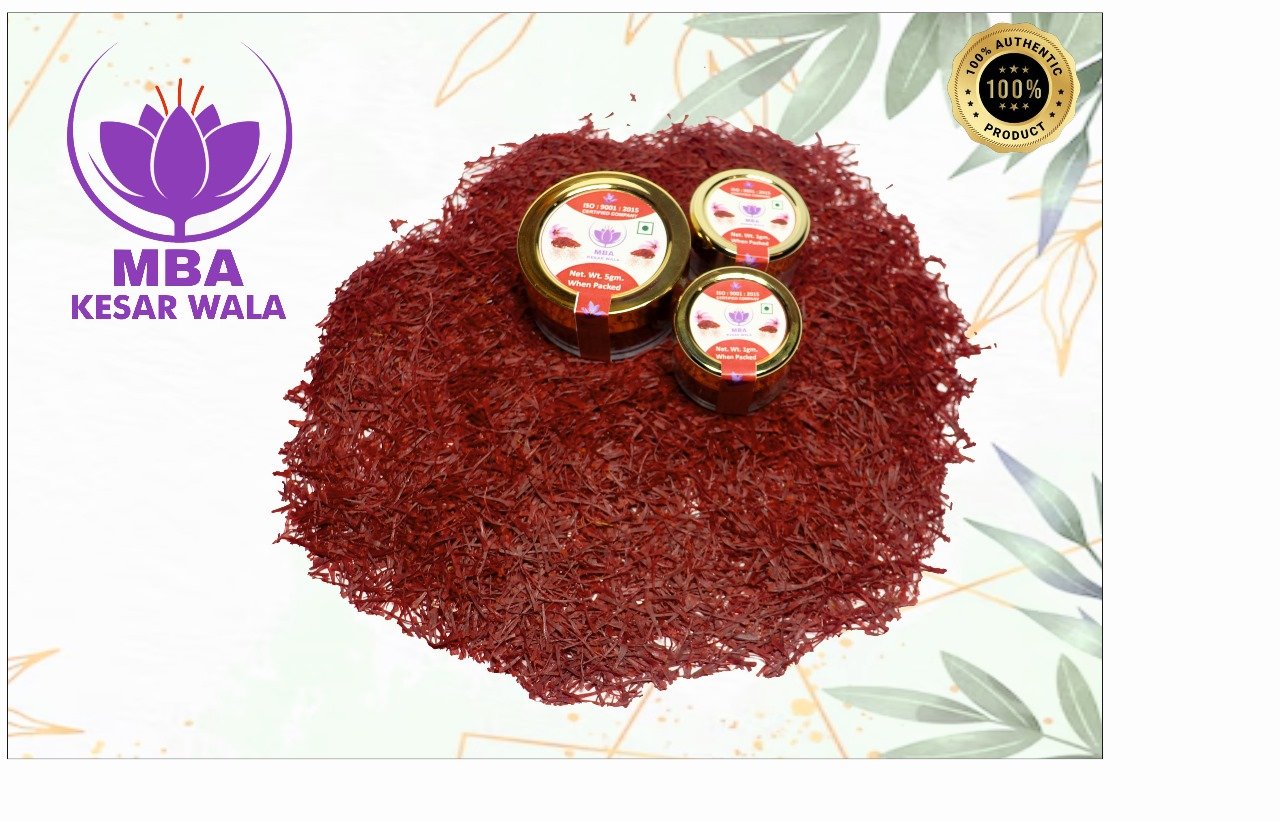
Kashmiri Saffron
₹369.00 – ₹2,586.00Price range: ₹369.00 through ₹2,586.00 N/A
Buy Pure Kashmiri Saffron Online At Best Price
Direct from Farmer…
Pure Kashmiri Saffron. It is the onset of September Around the dense streets of Pampore where massive land areas spread boundlessly These arid-looking lands give birth to the most expensive spice flowers and turn this earthy expansion into a lavender canvas Saffron… Handpicked by owners of the land, the crocus flowers are collected in large quantities at the start of the winter season in Kashmir A huge 150000 flowers generate a mere 1 kg of saffron The strands, just 3 in the flowers, are handpicked and collected separately This is a family affair, and each member of the family contributes in separating strands from the flowers. Sorting is done of the wet strands, which are too moist to make a spice, and needs drying later Sorting is mostly done by men of the family, who sit in groups for days together to separate pure threads from superfluous ones. Pure strands are even passed through a sieve to filter any impurities or broken parts. Clean strands then go through winnowing which separates the yellow part from the red ones. Any yellow part left is handpicked with tweezers All the parts of the crocus flower have their own uses, and hence are stored for different purposes Over 15000 families in Kashmir cultivate saffron. Over three generations in some families have been associated with the cultivation of this precious spice.
1) What is Pure Kashmiri Saffron
Pure Kashmiri saffron is a high-quality variety of saffron (Crocus sativus) grown in the Kashmir region of India. Known for its deep red color, strong aroma, and distinct flavor, it is often considered one of the most prized and expensive spices in the world. Kashmiri saffron is used in cooking, traditional medicine, and cosmetics due to its potent properties.
2) How to Select
When choosing Kashmiri saffron:
Color: Look for deep red threads with minimal yellow or white parts.
Aroma: Genuine saffron has a strong, earthy fragrance.
Texture: The threads should be dry but not brittle.
Packaging: Prefer saffron that comes in air-tight, transparent containers to see the quality.
Authenticity: Ensure it’s labeled as Kashmiri saffron, and check for certifications like GI (Geographical Indication) tags.
3) Benefits of Kashmiri Saffron
Pure Kashmiri saffron is packed with antioxidants such as crocin, safranal, and picrocrocin. Some key benefits include:
Enhances mood and fights depression
Boosts memory and learning abilities
Promotes digestive health
Improves heart health
Contains anti-inflammatory and anticancer properties
Promotes glowing skin
4) Packaging Sizes Available
Buy Kashmiri saffron is typically available in small packaging sizes:
1 gram, 2 grams, 5 grams, 10 grams
Bulk packaging for culinary or industrial use can be available in larger quantities like 50 grams or 100 grams.
5) Uses
Culinary: Commonly used in dishes like biryani, pulao, sweets, and sauces. It adds both flavor and a golden-yellow color.
Medicinal: Used in traditional Ayurveda and Unani medicine to treat various ailments like digestion issues, menstrual problems, and mood disorders.
Cosmetic: Added to skincare products for its anti-aging and complexion-brightening effects.
6) Health Benefits for Specific Groups
Men: Improves fertility, increases energy levels, and enhances libido.
Women: Helps with PMS symptoms, regulates menstrual cycles, and improves mood.
Kids: Enhances memory and learning abilities, supports immunity, and improves appetite (use in small quantities).
Elders: Promotes heart health, reduces symptoms of depression, and enhances cognitive function.
7) Taste
Kashmiri saffron has a unique taste, combining a sweet, floral flavor with earthy, slightly bitter undertones. It is rich and luxurious, with a depth that enhances both savory and sweet dishes.
8) How to Consume
Infusion: Soak a few strands of saffron in warm water, milk, or broth for 15-30 minutes before adding it to dishes.
Milk: Add a pinch to warm milk, often consumed with honey or almonds.
Sweets and Savories: Use in dishes like kheer, rice, and sauces for both flavor and color.
Tea: Steep a few strands in hot water or tea to make saffron tea.
9) How to Store
Store saffron in an airtight container, preferably glass or metal, and keep it in a cool, dark place away from light and moisture. Storing it properly preserves its flavor and potency.
10) Product Life
Shelf Life: Saffron can last up to 2-3 years if stored properly in a cool, dry place.
Harvesting Time: Saffron is typically harvested in October-November during the autumn season.
Post-Harvest: After harvesting, the saffron threads are dried and packaged for sale.
Subsequent Use: It can be stored for future use, but its potency decreases over time, so it’s best to consume within the first year for optimal benefits.
11) Conclusion:
We provide only the highest grade of saffron, known for its deep red color, strong aroma, and intense flavor, which guarantees an exceptional culinary and health experience.
Our saffron is sourced directly from the best farms, ensuring it is free from any artificial additives or preservatives.
| packaging | 1 GRM, 10 GRM, 2 GRM, 5 GRM |
|---|
5.00
4 reviews for Kashmiri Saffron
Related products
Saffron Oil
Saffron Face Scrub
Saffron Face Cream
₹724.00 N/A


₹363.00 N/A

















Growth crafters –
I’ve been using saffron from MBA Kesarwala for a while now, and I must say original quality, and you can literally see and smell the difference. The quality is exactly as shown.
Ordered online—secure packaging and timely delivery.
Amit K –
Best Saffron Direct from Kashmir
100% Satisfied with Quality
Parth –
“Great quality Kashmiri saffron! The threads are vibrant and aromatic, adding a rich flavor to my dishes. Packaging was secure and fresh, and delivery was quick. Highly recommend for anyone looking for authentic saffron.”
Vaidehi –
I ordered Pure Kesar last month and The quality is amazing 100% pure Kashmiri saffron.i am using it in milk and sweets.very satisfied satisfied.customer service is also good and fast reply.